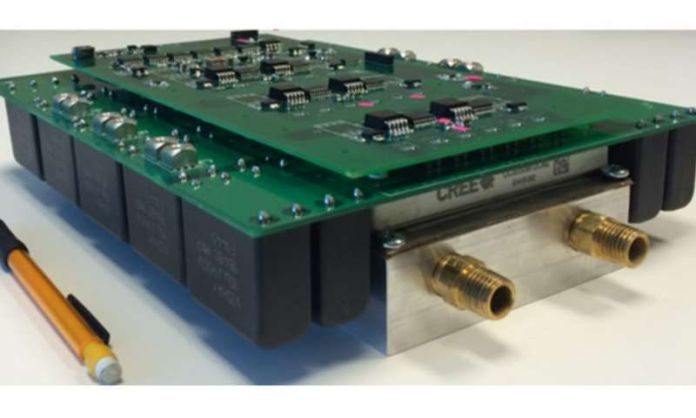Electric and Hybrid vehicles depend on inverter device. It ensures that sufficient electricity is passing from the battery to motor during operation. Now, scientists from North Carolina State University have developed a new inverter device with effectiveness in lighter and smaller package.
This new inverter device is made from off-the-shelf components made of the wide-bandgap semiconductor material silicon carbide (SiC). The power density of new SiC materials allows engineers to make the inverters and its smaller and lighter components. Additionally, it is able to pass 12.1 kilowatts of power per liter (kW/L). It can transfer 99 percent energy to the motor. This is two percent higher than the common inverters under normal conditions.
Iqbal Husain, an associate professor, said, “The silicon carbide inverters can be smaller and lighter than their silicon counterparts. It can further improve the range of electric vehicles. And new advances in inverter components should allow us to make the inverters even smaller.”
Range anxiety is the major factor limiting public acceptance of electric vehicles. People are afraid they won’t be able to travel long or that they’ll get stuck on the side of the road.
As compare to previous versions, this new inverter device is more efficient at blowing heat. This could allow the creation of air-cooled inverters, eliminating the need for heavy liquid cooling systems.
Hussain said, “Conventional, silicon-based inverters have likely improved since 2010. But they’re still nowhere near 12.1 kW/L. But, frankly, we are pretty sure that we can improve further on the energy density that we’ve shown with this prototype.”
Through recently made ultra- high-density SiC power components, scientists hope to get closer to DOE’s 13.4 kW/L target.
Existing SiC inverter prototype was designed to reach 55 kW- power in hybrid vehicles. Scientists are now in the process of scaling it up to 100 kW- power. They are using off-the-shelf components for it. They’re also in the process of developing inverters that make use of the new, ultra-high density SiC power components.
